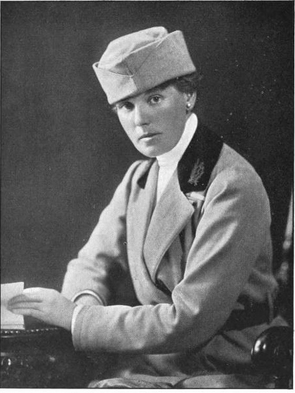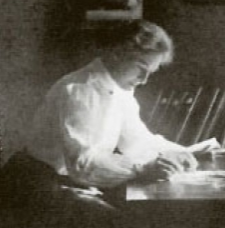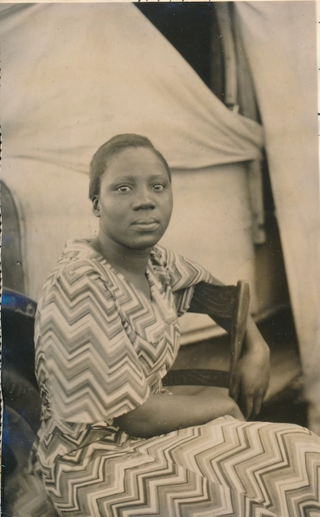The London School of Medicine for Women (LSMW) established in 1874 was the first medical school in Britain to train women as doctors. The patrons, vice-presidents, and members of the committee that supported and helped found the London School of Medicine for Women wanted to provide educated women with the necessary facilities for learning and practicing midwifery and other branches of medicine while also promoting their future employment in the fields of midwifery and other fields of treatment for women and children.
Sir Graeme Robertson Dawson Catto FRSE, Hon FRCSE, FRCP(Lon, Edin & Glasg), FRCGP, FFPM, FAoP, FMedSci FKC is a Scottish doctor who was president, later chair, of the General Medical Council until April 2009. He is also currently Emeritus Professor of Medicine at the Universities of London and Aberdeen and was an honorary consultant nephrologist at Guy's and St Thomas' NHS Foundation Trust and Aberdeen Royal Infirmary.

Dame Anne Louise McIlroy, known as Louise McIlroy, was a distinguished and honoured Irish-born British physician, specialising in obstetrics and gynaecology. She was both the first woman to be awarded a Doctor of Medicine (MD) degree and to register as a research student at the University of Glasgow. She was also the first woman medical professor in the United Kingdom.
Eleanor Davies-Colley FRCS was a British surgeon. Among the earliest women in the UK to pursue a career in surgery, at that time an almost entirely male-dominated profession, she was also the co-founder of the South London Hospital for Women and Children.
Bangour General Hospital was a hospital just west of the village of Dechmont, West Lothian, Scotland. It had its origins during the Second World War when hospital bed numbers in Scotland were greatly expanded to deal with the anticipated increase in civilian and military war casualties. The Emergency Hospital Service (Scotland) scheme resulted in seven new hospitals being built, while at Bangour Village Hospital in West Lothian an annexe of five ward blocks was built and this developed into Bangour General Hospital after the war. This hospital served the population of West Lothian as a general hospital and also included a maxillo-facial unit serving the Lothian region and a burns and plastic surgery unit serving much of east Scotland, the Borders and the Highland region. The hospital services were transferred to the newly built St John's Hospital at Livingston during 1989–90, and Bangour General Hospital closed in 1990 and was subsequently demolished.

Lilian Lindsay, CBE, FSA was a dentist, dental historian, librarian and author who became the first qualified female dentist in Britain and the first female president of the British Dental Association.
Dame Cecily Mary Wise Pickerill was a New Zealand plastic surgeon who specialised in treating infants with cleft palates and other conditions needing plastic surgery. She successfully demonstrated that care of hospitalised infants by their mothers prevented infections.

Alexander Burns Wallace (1906–1974) was a Scottish plastic surgeon. He was a founding member and president (1951) of the British Association of Plastic Surgeons, and the first editor of the British Journal of Plastic Surgery. In authorship he appears as A. B. Wallace.
Gertrude Marian Amalia Herzfeld was an English surgeon, one of the first female surgeons to work in Scotland and the first woman paediatric surgeon. The second female fellow of the Royal College of Surgeons Edinburgh, and the first practicing female fellow, Herzfeld chaired the Edinburgh city branch of the British Medical Association from 1960 to 1962, and was National President of the Medical Women's Federation from 1948 to 1950.

Alexandra Mary Chalmers Watson CBE,, known as Mona Chalmers Watson, was a British physician and head of the Women's Army Auxiliary Corps. The first woman to receive an MD from the University of Edinburgh, she helped found the Elsie Inglis Hospital for Women, was the first president of the Edinburgh Women's Citizen Association, a staff physician and later senior physician at the Edinburgh Hospital and Dispensary for Women and Children, and co-edited the Encyclopaedia Medica with her husband, Douglas Chalmers Watson. At the time of her death in 1936, she was president of the Medical Women's Federation, having been elected May 1935.
Charlotte Douglas OBE FRCOG was a Scottish obstetrician and gynaecologist. She was a senior regional account manager for North of England, senior medical officer for Scotland and campaigner for the progressive improvement of maternity services in Scotland.

Mary Charlotte Murdoch was a Scottish-born physician and suffragist. She had a lifelong association with Kingston upon Hull, where she was the first woman doctor, a suffragist, and car owner.

Prudence Barron MBE FRCSE was a British surgeon at the Royal Hospital for Sick Children, Edinburgh and geriatrician.

Mary Hannah Frances Ivens CBE FRCOG was an obstetrician and gynaecologist who was the first woman appointed to a hospital consultant post in Liverpool. During the First World War she was chief medical officer at the Scottish Women's Hospital at Royaumont, northeast of Paris. For her services to the French forces she was awarded a knighthood in France's Legion of Honour and the Croix de Guerre.

The Edinburgh College of Medicine for Women was established by Elsie Inglis and her father John Inglis. Elsie Inglis went on to become a leader in the suffrage movement and found the Scottish Women's Hospital organisation in World War I, but when she jointly founded the college she was still a medical student. Her father, John Inglis, had been a senior civil servant in India, where he had championed the cause of education for women. On his return to Edinburgh he became a supporter of medical education for women and used his influence to help establish the college. The college was founded in 1889 at a time when women were not admitted to university medical schools in the UK.

Ian Aird was a Scottish surgeon who became Professor of Surgery at the Royal Postgraduate Medical School in London. There he built up a large and productive research department which made particular contributions in cardiac surgery, renal transplantation and the association of blood groups with stomach cancer. He came to national and international prominence in 1953 when he led the teams which performed an operation to separate conjoined twins. His book A Companion in Surgical Studies was among the best selling surgical textbooks of its day. He died suddenly in 1962 at the age of 57.

Isabella Forshall FRCSE was an English paediatric surgeon who played a leading role in the development of the speciality of paediatric surgery in the United Kingdom. She took a particular interest in neonatal surgery and was instrumental in the establishment of the Liverpool Neonatal Surgical Unit, the first neonatal intensive care unit in the UK and indeed in the world.
Elizabeth Horne Bain Bryson née Macdonald was a physician, broadcaster, and prominent member of the League of Mothers, an organisation promoting the Christian upbringing of children.
Nancy K. Conn (1919–2013) was a Scottish bacteriologist known primarily for her work on preventing the spread of typhoid in Edinburgh in the summer of 1970.

Caroline Nompozolo was the first native South African woman to qualify as a physician. She studied medicine at the School of Medicine of the Scottish Medical Royal Colleges and was later house surgeon at St Charles' Hospital.











